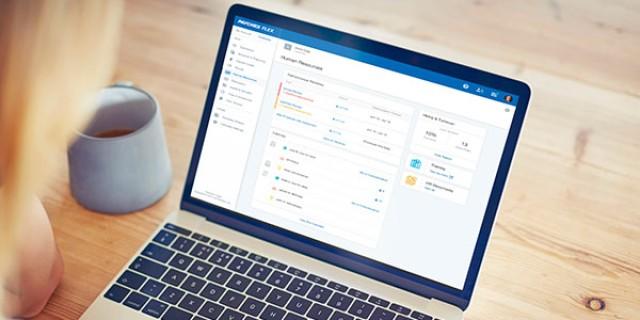- Employee Benefits
- Article
- 6 min. Read
- Last Updated: 08/28/2025
Dependent Care FSAs: What Are They and How Do They Work?

Table of Contents
Many employees with children or elders who require daytime supervision have no choice but to pay for expensive dependent care services so they can go to work. Such services can be a significant financial burden on a household budget. A flexible spending account (FSA) earmarked for dependent care, also known as a dependent care FSA or DCFSA, is a tool that can shoulder some of these costs and help your employees make their pre-tax dollars work a little harder.
As an employer, ensuring your employees have reliable dependent care is essential to keeping your business running smoothly. However, the high cost of dependent care services can increase financial anxiety, which in turn risks impacting productivity and employee wellness. The ability to help your employees find some financial relief while strengthening your workforce reliability is making a DCFSA benefit a popular perk among employers and employees. It's time to learn all about what a dependent care FSA is so you can communicate essential details to your workers that will help them make the open enrollment benefit choices that maximize their paychecks.
What Is a Dependent Care FSA (DCFSA)?
Paying for dependent care services — preschool, before- and after-school programs, child or adult day care, and summer, winter, or spring day camps — can gobble up a large portion of a paycheck. A dependent care flexible spending account is a pre-tax benefit account used to pay for the various child and adult care programs that allow a caregiver to work.
As part of a Section 125/cafeteria plan, DCFSA is also commonly referred to as a child care FSA, dependent FSA, child FSA, and child dependent care FSA. Regardless of its moniker, this benefit is an important and strategic financial tool that can help your employees go to work knowing their loved ones are being cared for in a trusted environment. In turn, this allows employees to focus on their role at work and remain engaged and productive.
How Does a Dependent Care FSA Work?
Employees can leverage pre-tax dollars to fund an FSA dependent care account if it is offered by the employer. For the dependent care benefits account to work, an employee must authorize a certain amount to be withheld from each paycheck, and these employee deductions are then deposited into an account. To access the funds to pay for eligible dependent care expenses, an employee pays the expense out of pocket then requests reimbursement from their employer.
Funds set aside in the dependent care FSA are pre-tax dollars, which reduces an employee's payroll taxes. It's important to note that all funds in the account must be used during the plan year. However, employees do get a little breathing room — there's a 2.5-month grace period (option by plan sponsor) after the plan year ends where remaining funds can be used. After that grace period, though, any unused money is forfeited and doesn't roll over to the next plan year.
What Is The Difference Between A Health Care FSA vs. Dependent FSA?
While both a health care FSA (HFSA) and DCFSA are designed to help ease an employee's financial burden by reducing a participant's taxable income, they each have a slightly different framework. Here are the key differences between a health care FSA vs. dependent FSA:
- Eligible Expenses: HFSA reimburses eligible out-of-pocket medical expenses. DCFSA reimburses eligible work-related care expenses for qualifying dependents.
- Maximum Annual Contribution: For 2025, HFSAs allow contributions of up to $3,300. The dependent care FSA limit in 2025 is $5,000 per household, or $2,500 for those who are married and filing separately.
- Rollover and Grace Periods: With an HFSA, up to $660 of unused funds can be rolled over to the following year on top of the regular contribution limit. If a dependent care FSA grace period isn't offered, unused funds are forfeited at the end of the year. For a DCFSA, the money must be used by the end of the plan year and grace period (if offered), or those unused funds are lost.
- Availability of Funds: HFSA accounts are prefunded, meaning once a participant has determined their annual amount, the full amount of money is available at the start of the plan year. DCFSA accounts are post-funded. A participant only has access to money in the account as it is contributed throughout the plan year.
What Is The Difference Between A Dependent Care FSA vs. Tax Credit?
Both the dependent FSA and child and dependent care tax credit (CDCTC) provide tax advantages, but they calculate their respective tax breaks differently. The DCFSA usually provides a greater financial gain, especially for those with higher incomes. According to the IRS, the child and dependent care credit is calculated based on the taxpayer's income and percentage of dependent care qualifying expenses. The lower a taxpayer's income, the larger the credit.
The child and dependent care tax credit for 2025 allows up to $3,000 in qualifying dependent care expenses for one eligible child or up to $6,000 for two or more eligible children. However, taxpayers who are married but choose to file separately generally can't take this credit. Employees also aren't eligible if their adjusted gross income is more than $438,000.
Taxpayers can use both a DCFSA and claim the child and dependent care tax credit, but they can't "double-dip" on the same expenses. If day care is paid for with FSA dependent care funds, those same day care costs can't be claimed for the tax credit.
Can You Enroll In Multiple Saving Accounts?
It's perfectly fine for employees to have both a DCFSA and an HFSA at the same time. However, participants can't combine an HFSA with an HSA because they both target health-related expenses, and the IRS doesn't allow that overlap. Note that each account comes with its own contribution limits that don't affect each other, so maxing out a DCFSA won't impact what an employee can contribute to their HFSA. Participants will need to keep their accounts and expenses completely separate so as not to mix day care receipts with medical bills when it comes to employee reimbursements.
Dependent Care FSA Rules, Requirements, and Contribution Limits
There are numerous dependent care FSA rules that specify everything from FSA dependent care qualified expenses, what the account can cover, and eligibility. There are dependent care FSA limits on contributions and specifications for what happens to unused funds. It's important that your employees understand these various dependent FSA rules, requirements, and limits to determine if a DCFSA is in their best interest and how to make the most of this valuable benefit.
What Can a Dependent Care FSA Be Used For?
What does FSA dependent care cover? It helps your employees pay for services to care for eligible loved ones who cannot fully care for themselves. Think in terms of a child who is too young to stay home alone (typically under the age of 13) or a dependent adult who, due to physical or mental issues, needs care and supervision during an employee's workday.
Dependent Care FSA Eligible Expenses: What Qualifies?
Employees can only be reimbursed through their DCFSA for certain qualified expenses. These are care services that allow them to go to work. Examples of eligible expenses include:
- Application fees and deposits for care services provided
- Day care, nursery school, or preschool
- Adult day care centers
- Before and after-school programs
- Babysitting (Not all babysitting services are eligible. The babysitter cannot be a tax dependent of the employee, and the service must be needed to fulfill work or job requirements.)
- Behavioral modification programs
- Elder care
- Dependent care expenses for people with disabilities
- Extended care, such as supervised programs before or after regular school hours
- Nannies or au pairs
- Summer day camp
- Transportation to and from eligible care, when provided by your care provider
What Is Not Qualified as a DCFSA Eligible Expense?
A number of expenses might be mistaken for dependent care but are not eligible, according to the IRS. School tuition, tutors, and language class expenses are considered educational expenses, not child care expenses. Enrichment programs such as hobby-related lessons (music, dance, karate, etc.), sleepaway camps, and field trips are also not eligible. The same goes for food, medical care, nursing home care, and nonwork babysitting expenses.
Who Is Eligible for Dependent Care FSA?
Certain dependent care FSA eligibility requirements must be met for an employee to be reimbursed for their out-of-pocket expenses and receive the tax benefit. The recipient of the dependent care service must be a "qualifying individual," which includes:
- A dependent of the employee who has not reached the age of 13
- A dependent of the employee who is physically or mentally incapable of caring for themselves and lives with the employee for at least six months of the year
- The employee's spouse is physically or mentally incapable of caring for themselves and lives with the employee for at least six months of the year
The definition of dependent is subject to a number of specific rules regarding that individual's gross income and tax filing status. Employees should consult with a tax adviser if there are questions regarding qualifying care for a specific individual.
Can You Change Your Dependent Care FSA Mid-Year?
Once an employee finalizes their dependent FSA status and flexible spending day care contributions for a plan year, changes are not permitted until the next open enrollment period. However, the IRS does recognize that events like death, adoptions, and marriage don't always conveniently occur during the open enrollment period. An employee can request a change of status during the plan year if they meet any of the following IRS-approved events and the benefit plan permits it. These events are an employee's change of status in:
- Marital status (e.g., divorce, marriage, or death of a spouse)
- Number of dependents (e.g., birth, adoption, or death of a dependent)
- Employment status of the employee, employee's spouse, or dependent
- Eligibility requirement events (e.g., a dependent becomes eligible or ceases to satisfy an eligibility requirement for the dependent FSA benefit)
- Change of residence for an employee, the employee's spouse, or a dependent
- Cost in dependent care coverage
Dependent Care FSA Contribution Limits for 2025
The IRS sets dependent care FSA contribution limits for each year. For 2025, the IRS caps employee contributions at $5,000 for single filers and couples filing jointly, and $2,500 for married couples filing separately. There are some qualifications to be eligible to take advantage of the full amount.
If a couple is married and filing jointly, both the employee and their spouse must be either working or looking for work. This requirement is waived under one of two conditions: 1) the spouse has a disability (physical or mental) and lives with the employee for a minimum of six months each year, or 2) the spouse is a full-time student. In the event that either an employee or their spouse earns less than $5,050, the IRS caps the contribution limit to the lower of the earned amounts. In the case of a divorced couple, only the parent with whom the child spends the most time can take advantage of the dependent FSA tax break.
Can Employers Contribute to Employee Dependent Care FSAs?
Employers can contribute to employee dependent care flexible spending accounts. However, those contributions to the dependent care spending account are considered part of the employee's total annual limit set by the IRS. Any combined contributions from both the employer and employee cannot exceed the FSA for child care limits. This employer contribution strategy can be an attractive employee benefit that helps staff manage child care costs while staying compliant with federal regulations.
How Does an Employee Get Reimbursed From a Dependent Care FSA?
It's important that employees understand exactly how to get reimbursed from FSA dependent care. An employee pays out of pocket for a dependent care FSA-eligible expense, then completes an employer-provided claim form requesting a reimbursement. Proof of payment for the service in the form of a receipt with specific information must be included with the claim form. The receipt must include:
- The recipient's name (the child or adult receiving the care)
- Service provider's name
- Date of service
- Type of service
- Amount of the expense
Does Dependent Care FSA Unused Money Rollover?
Dependent care FSA rules are subject to a "use it or lose it" requirement. This means participants must forfeit any unused funds remaining in their account at the end of the plan year and dependent care flexible spending account grace period (if a grace period is provided). Many organizations offer a 2.5-month grace period following the end of the plan year to help employees use remaining funds for new eligible expenses from January 1, to March 15, of the following year, though this can vary depending on the dependent care flexible spending account rules.
If employers find that they have unused funds in their dependent FSA accounts, they have a few options. They can keep the funds as part of the business, use the funds to cover the benefit administrative costs, or opt to have the business return the funds to employees in a reasonable and uniform manner. An employer cannot take the funds as cash or transfer the money to another FSA, such as an FSA health savings account. Additionally, if employees change jobs, are terminated, or retire, they need to use their DCFSA funds before they leave the company to remain eligible for reimbursement. It's important that employees understand that unused funds at the end of the plan year are subject to forfeiture and are encouraged to assess their annual costs with care.
Benefits of Dependent Care FSAs for Employers
In addition to alleviating financial strain for your employees, a dependent care flexible spending account can help your employees show up for work with peace of mind that their loved ones are being cared for in a safe environment. In a time of uncertainty defined by rapid, dramatic changes, a DCFSA is one benefit that can help your business run smoothly and remain primed for success. Offering a flex spending dependent care option can significantly decrease absenteeism since employees won't need to miss work due to financial stress or last-minute care arrangements when it comes to child care. It can also help you attract and retain talent in a competitive job market, especially among working parents who highly value family-friendly benefits. Don't miss taking advantage of other FSA benefit account options that can help your workers safeguard the physical, mental, and financial success they deserve.
Learn More About Setting Up Dependent Care Accounts
Dependent care FSAs create a win-win situation for both employers and employees by reducing tax burdens while making essential child care more affordable for working families. For employers, offering this benefit can boost employee satisfaction, reduce absenteeism, and demonstrate your commitment to supporting working parents' needs. Employees gain immediate tax savings and greater financial flexibility to manage their dependent care expenses throughout the year.
Enhance Your Benefits Package With Paychex
When you're ready to enhance your benefits package with this valuable offering, we're here to help make the setup process seamless.


Tags









